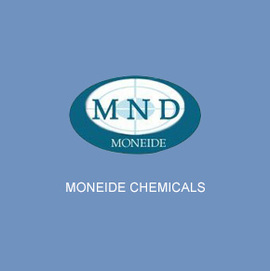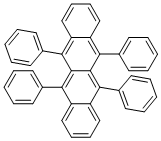Welcome to Tangshan Moneide Trading Co., Ltd.
Bahan Kimia Moneida
Tel: 86-315-8309571
WhatsApp/WeChat/Mobile: 0086-15633399667
Skype: janet-jujur
Surat: sales@moneidechem.com
Alamat: 2-7-523 Jidong Building Materials Tangshan, Hebei 064000 Tiongkok
|
Nama Kimia |
Rubrene |
|
Synonyms |
5,6,11,12-Tetraphenylnaphthacene |
|
Nomor CAS. |
517-51-1 |
|
Rumus molekul |
C42H28 |
|
Nomor EINECS |
208-242-0 |
|
Berat molekul |
532.67 |
|
Struktur Molekul |
|
|
Rincian |
Appearance: orange-red crystalline powder Assay: 99.8%min. Major impurity: 0.15% max. Package: 100g/ Al bottle, 1KG/Al foil bag |
|
Aplikasi Utama |
|
What is the color of rubrene?
Rubrene is renowned for its intense orange-red coloration in crystalline form, appearing as vibrant reddish crystals with a distinctive metallic luster. In solution, it exhibits strong orange fluorescence under ultraviolet light due to its extended conjugated π-electron system. The compound's striking color originates from its unique tetracene-like structure with four fused benzene rings, which allows efficient absorption of blue-green light (around 450-550 nm wavelength). This optical property makes rubrene crystals visually identifiable even at low concentrations. When purified, the crystals display a deep ruby-like hue, though slight variations in shade may occur depending on crystallization conditions and sample purity.
What is the density of rubrene?
Rubrene has a density of approximately 1.26 g/cm³ in its solid crystalline form at room temperature. This relatively low density for an organic semiconductor material contributes to its favorable charge transport properties. The density value reflects the compound's molecular packing in the crystal lattice, where the planar aromatic systems stack efficiently while maintaining sufficient intermolecular spacing. The precise density may vary slightly depending on the crystalline polymorph obtained, as rubrene can form different crystal structures with marginally varying unit cell parameters. This physical property is important for material scientists developing organic electronic devices where mass-to-volume ratios affect device performance.
What is rubrene used for?
Rubrene serves as a high-performance organic semiconductor in cutting-edge electronic applications due to its exceptional charge carrier mobility. It's widely employed in organic field-effect transistors (OFETs), organic light-emitting diodes (OLEDs), and photovoltaic devices as both an active layer and dopant material. Research laboratories utilize rubrene as a model system for studying fundamental charge transport phenomena in organic crystals. Its strong fluorescence makes it valuable as a laser dye and in optical sensors. Recently, rubrene has shown promise in spin-based electronics (spintronics) and as a sensitive material in radiation detectors. These applications leverage its unique combination of electronic and optical properties that outperform many synthetic organic materials.






























